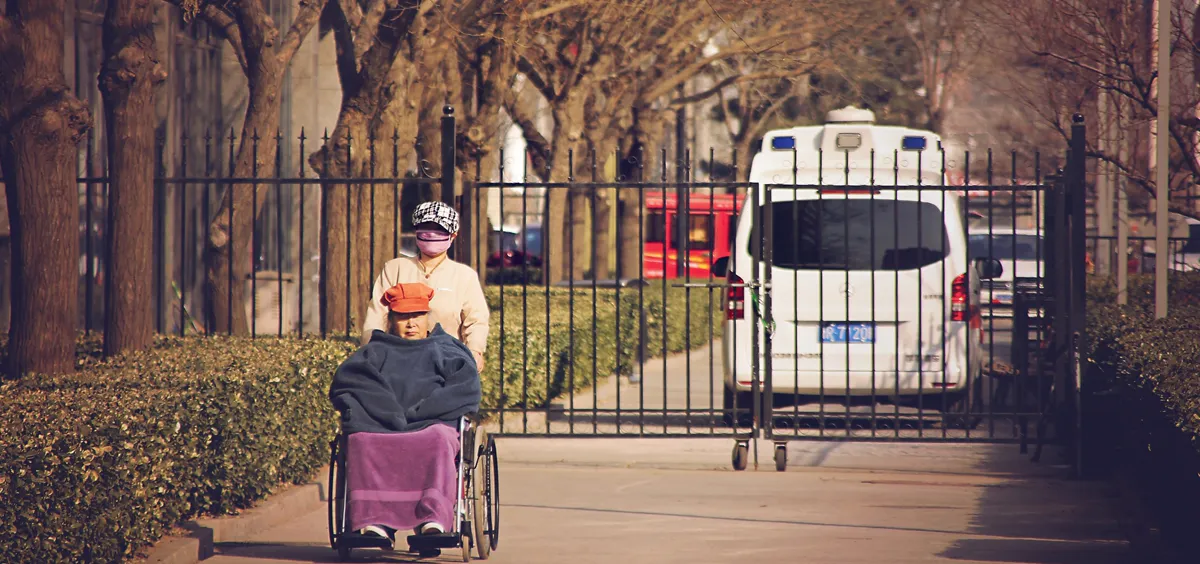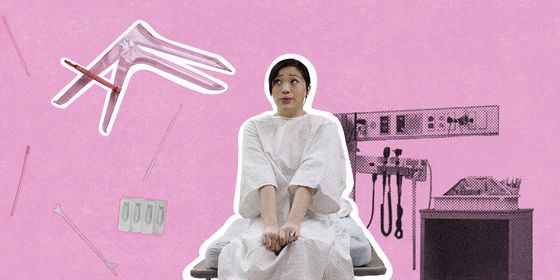Facing a growing crisis, the private health industry is betting on dedicated cities for seniors—and banking on foreigners to help
Bus tours don’t stop any more at the Yanda International Health City—visitors get a slick reception from the Yanda marketing department, if representing government or media, or a classy individual tour when coming on behalf of elderly family members. But when TWOC first visited this sprawling vanguard of futuristic healthcare back in 2010, it was a different story.
Yanda can still be found on the outskirts of Beijing, in a part of Hebei province increasingly surrounded by the encroaching capital. A long, bombastic 2011 ad for the City, heavy in CGI and stock images, pinpointed its location to the sparsely developed Yanjiao, a town of some quarter million, 30 kilometers east of Tiananmen Square.
Here, dozens of prefab high-rises, medical facilities, and community buildings straddle a rectangular 125-acre tract of land, bisected by man-made lake that draws from the nearby Chaobai River. Plans for this “health city” date back more than a decade, when China was readying itself for the international opportunities afforded by the 2008 Olympics. Yanda’s website suggests that a consortium of developers and “high-tech building material” executives sketched out ambitious plans to become the world’s go-to destination for the burgeoning market in medical tourism, focusing on the elderly, wealthy, and retiring.
Conceptually, this self-proclaimed “hybrid treatment and care facility” is made up of six components: the Yanda Hospital, Yanda Golden Age Health Maintenance Center for housing seniors, Yanda Medical Research Center, Doctor and Nurse Training Center, International Conference Center, and the Yanda International Medical School.
Some 10 billion yuan in funding (almost 1.68 billion in today’s USD) was secured, and in 2007, ground broke on hardened soil in Hebei. By March 2009, a posting on zhaobiao.gov.cn, a governmental portal soliciting construction bids, listed Yanda City’s official launch as January 1, 2010. In the summer of 2010, a blizzard of promotional materials began appearing in Chinese media, including the English-language Global Times.
A now-deleted infomercial on Blue Ocean Network featured Anglo-American siblings living in China, discussing the daily rituals and needs of their far-flung aging parents, while hovering over a laptop. Filmed in soft focus, with a soothing synth soundtrack, the pair call home to discuss moving their parents from their well-appointed US abode to Yanda. The four-way conversation is intercut with tracking shots of a putative medical director waxing on the Yanda dream, enumerating the activities and shopping destinations that will finally be available after expatriating to China.
Another quarter-page ad in China Daily on July 2, 2010 boasted that “Phase One has been completed; by October’s National Day, Yanda would become “fully operational.” Nestled in the verbose text was a list of target markets: “1) 150 million high-income domestic Chinese with annual incomes of over 40,000 USD; 2) around 15 million foreigners working, living and staying in China on a long-term basis; 3) the international market outside China; 4) average citizens living adjacent to the Yanda International Hospital.” (According to the National Bureau of Statistics, only 217,000 foreigners held work visas in 2008, and only 7.75 million visited China as tourists during 2009)
Yanda’s original promotional material suggested international residents would be its second largest long-term market. With aging parents in the US beginning to think about retirement, I decided to see what Yanda offered. And I was impressed—though perhaps not entirely in the intended sense.

The private Yanda hospital finally agreed to accept Beijing social security in 2017 (VCG)
“We’ve had so many tour groups through here,” customer service rep Chu Xiangli told us; Chu was in her 20s, and carried a parasol to protect her from the sun; she asked us to call her Monica. “I’ve lost count,” she added: Most were pensioners, drawing social security from their danwei. Chu agreed to show us all Yanda’s operational facilities, as well as the complex’s expansive grounds.”It was a cloudless day in 2010, 35 degrees Celsius, and I was waiting in Yanda’s concrete parking lot; various groups bustled between outpatient building. The high-rises appeared unblemished by the dust storms common to northern China in the spring. With me was a Chinese colleague who had agreed to help with translation—essential when we were later pitched various experimental therapies.
We walked over a stone bridge, along winding paths lined by newly planted saplings awaiting turf, and learned of the Church Area that would accommodate four foreign faiths: twin Christian churches; a Buddhist temple with ornamental dragons contouring its roof; and a mosque with a crescent moon atop an onion dome. Construction workers banged away inside an unidentified fifth building. “That’s the bank,” Chu explained.
Billboards on cordoned-off areas advertised future facilities—a supermarket, library, gym, swimming pool, sauna, golf course, senior citizens’ college, post office, psychological consulting room. A furnished “show apartment” looked not unlike the advertising promo; the rest were unoccupied. The “fishing pavilion” in the brochure, part of a “ribbon-shaped water garden,” was still a concrete-lined pond with greenish water and teeming koi. “Everything will be finished by 2012,” Monica reassured.
I imagined my parents’ reaction: Would they respond to its grandiloquent flourishes, its superlative voiceovers proclaiming: “Yanda people warmly welcome friends all over the world to join Yanda International Health City of China for a brilliant tomorrow… Blessing China, benefiting Asia, and embracing the world!” Would they bless, embrace, and settle in this region with an entirely different climate, language, culture, and political system? Or would they rather move to Florida?

Senior residents can cross a bridge to pick up medication at the hospital (VCG)
Inside a small office in the staff dormitory, Monica introduced Zhang Shugang (“Call me Glen”), sales manager for Yanda’s marketing and business development center, along with “Mr. Yang,” who managed its international hospital; both wore open-collar white shirts under black jackets. “Our president [of Yanda] is a very influential person in Beijing,” Zhang warned cheerily. “He has personal relations and ties with the government.” Yanda “is a provincial-level project that enjoys preferential policies,” including support from the State Council.n 2016, the medical tourism market was valued at a staggering 100 billion USD in a global study by the Medical Tourism Index. Out of 41 destinations, Canada, the UK, Israel, Singapore, and Costa Rica ranked in the top five; China came 23. Patients Beyond Borders, a travel guide for would-be medical refugees, estimated some 15 million spend an annual 3,800 to 6,000 USD on cosmetic surgery, dentistry, cardiovascular care, orthopedics, reproductive health, weight loss, scans, second opinions, and cancer treatment overseas. Yanda’s vision also aligned with a 2009 pronouncement that China would offer universal healthcare to all citizens by 2020.
Mr. Yang asked about my parents: Were they sick? Seeking cancer treatments? “To live longer is the whole of humanity’s dream,” Mr. Yang beamed. “We have a stem cell bank. Stem cells are the building blocks of life, and are highly prized for their ability to change into the cells of other tissues.
“Ours,” he continued, “is a first-class private hospital that can accommodate 12,000 patients. Most Chinese ones are public [and] can hardly cooperate with international hospitals and organizations.” When fully complete, Mr. Yang added, Yanda would house up to 15,000 staff and have “business partners in Canada, America, Japan, and Singapore.
“We’ve already brought in many foreign doctors and experts who have achieved a lot in the field,” he concluded. When I checked, medical recruitment site jkyc.com listed more than 60 employment opportunities at Yanda, with management positions for micro-chipping, pharmaceuticals, biological engineering, nuclear medicine, nursing, ER, gynecology, and administration.
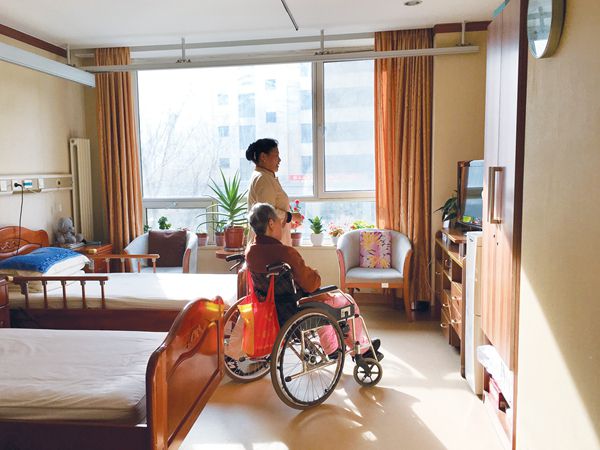
A full-time caretaker is an added expense on top of rent for Yanda’s luxurious units (VCG)
The final stop of our tour is the model Yanda apartment, bustling with busloads of elderly Chinese, becalmed on a buffet now, taking refuge from the heat.
Yang Zhun, a bespectacled rep who ran the floor show for prospective buyers, explained the advancements in technology soon to be available—the jewel of which was a Swedish innovation known as the “Sky Rail.”
This was a blue sling that could gently lift a patient (of up to 300 kilos) from their bed to almost any other part of the floor, via a system of tramlines. I was offered a spin. Filmed by a couple dozen Chinese pensioners, I was soon scooting around their future potential premises like a hamster in a slingshot, smiling and waving.
At the end of this unlikely jaunt, I again imagined my parents spending their final years in Yanda, nearly 7,000 miles from home, and felt compelled to ask about end-of-life services. “The Health City doesn’t have a cemetery,” Yang responded frankly. “But there is one nearby. I’m not sure who runs it.” What happens when a resident dies, I asked Monica? “The immediate family would be contacted before it’s too late,” she quickly explained. The international hospital has a morgue and the Church Area can accommodate “small funerals.”
Death—a tricky topic in most cultures—sometimes seems doubly difficult to discuss in China, even in communities like Yanda (which, in common with most Chinese buildings, doesn’t permit any fourth, 13th or 14th floors). But everyone has to die sometime—would they choose to do so at a place like Yanda?
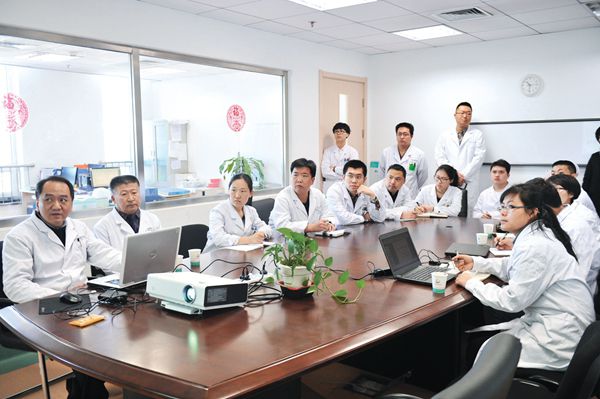
With the exception of the medical school, all components of the health city are up and running (VCG)
Eight years on, TWOC visited the complex again to see if Yanda’ vision had been realized. In March, the sunbaked soil had once again been broken by fresh excavators and concrete foundations. Phase Two of Yanda, according to new marketing director Li Donghui, offers an added 7,800 beds, and a membership scheme that gives seniors the rights to an apartment for 10 to 30 years, during which they can sublease the unit, or bequeath it. Other family members can also live on-site and—with the completion of a new kindergarten and supermarket—“seniors can bring grandchildren to live here,” Li says: Three generations under one Yanda roof.
Membership schemes already exists in Chinese real estate. In 2016, Dong Pan, director of the Real Estate Research Center at Beijing Normal University, lambasted this practice to China Business Journal as legally gray; “Selling property by another name, trying to get a faster return on the investment.” Li, though, calls it a step toward offering a “full cycle” of services. Though many areas remain swaddled in scaffolding, and the wind kicks up dust from numerous unpaved paths, the complex is filling up; the Golden Age Center already had a waiting list of nearly 1,000 families.
Like many enterprises before them, Yanda has found success by trading off international ambitions to milk windfalls from China’s own middle class. None of the senior center’s current 1,600 residents are foreign nationals (“I remember an old American gentleman, years ago, and a Russian patient at the hospital,” Li offers when asked). The hospital directors emphasize that the “international” aspect of the health city now refers to their technology, management standards, and the overseas training of many of their doctors—and while health tourism is not off the table, it’s no longer a priority.
The reason for this change of heart appears to be a regulatory snafu: China offers no appropriate visa for foreign retirees to live in the country long-term; even seasonal medical tourists (“snowbirds”) may find it hard to get temporary visas as they get older and their liability grows in the eyes of Chinese officials. Foreign insurance coverage is also limited, or even non-existent for medical services in China. Then there are the bureaucratic gauntlets to bringing foreign expertise into China. “We had a French doctor in the obstetrics department, and getting the approvals was extremely challenging; they control it very strictly,” says Li Haiyan, vice-president of the Yanda Group. She makes no mention of ever trying again.
Closer to home, Yanda now advertises partnerships with Beijing’s Chaoyang Hospital, Tiantan Hospital, and two other big names in the municipal healthcare system. On different days, doctors from these public institutions offer consultation at the private Yanda Hospital, a stone’s throw from the Senior Center. It’s a Ms. Zhang, sunning herself in a garden that broadcasts classical music at soothing volume, who informs us how crucial this collaboration is: “The conditions are pretty good; I prefer the natural environment here, and I can still see Beijing doctors.”
She used to work at Chaoyang Hospital herself. “They were the ones who recommended this place,” she whispers. “If I couldn’t see ‘our’ doctors, I wouldn’t have come.” It’s a common perception: China’s private and public hospitals, as well as those in first-tier versus provincial cities, offer vastly different quality of care.
This helps explain the formidable economic clout of Yanda’s residents. Billed as a mid-to-high-end retirement service, basic “living packages” at the complex—a rental apartment and basic medical services, but no food—starts at 5,000 to 7,000 RMB per month depending on unit type. Seniors requiring round-the-clock care can expect to spend at least 15,000 RMB each month. Beijing, according to its municipal civil affairs bureau, is China’s second “most aged” city, with close to 3.3 million hukou-holders over the age of 60 in 2016. That year, the city spent around 14 billion RMB in social security payments, giving more than an estimated 90 percent of seniors in retirement homes access to medical services, including 305 such facilities in Beijing’s surroundings.
Li Donghui estimates that Beijingers make up 98 percent of Yanda’s older residents, boasting that they “all own apartments in the center of the city.” The Health City even provides shuttles for those who wish to check up on those homes or spend a day in the city. “But they always come back here—they think of this as their home now.”
Life isn’t without its fair share of obstacles in this adopted home. Even as Mrs. Zhang and her companion, Ms. Wang, tally Yanda’s selling points, they see an opportunity to take a few complaints to the top when they spy Li Donghui with us. “I think it’s too hard to get medical treatments,” Zhang begins. “There’s on-site clinic [at the senior center], but if there’s any major problem we have to go across the lake to the hospital.”
“It’s just a few minutes’ walk; in a real emergency, the rooms have a call button for an ambulance,” Li reassures us.
“A few minutes for young people; I’m 80!” Ms. Wang counters. “It’s a trek!” Mrs. Zhang cackles, then continues an undertone. “It’s a pity the [consulting] doctors leave at the end of the day. The doctors here are no good.”
Ms. Wang takes up the baton: “The hospital accepts my social security, but the clinic doesn’t; I got medicine from over there”—she points at the hospital—“and they wouldn’t inject it for me here,” at the clinic. “It’s not coordinated: I don’t think I’ve been able collect my government meal subsidy, either. Or is it the traffic subsidy..?”
“You’re right,” Li interrupts with a smile. “They haven’t relaxed the regulations in Beijing—but we’re working on the problem. As people live longer and the economy grows, things will get better.”
“That’s right,” Ms. Wang nods.
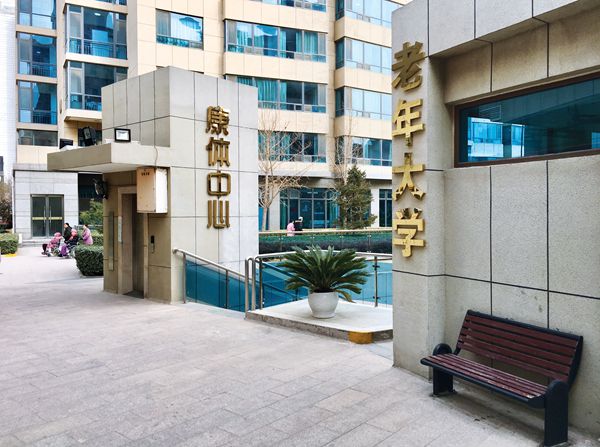
Yanda’s senior citizens’ college stands opposite the on-site clinic—health and recreation all in one (VCG)
Progress on Yanda’s stem-cell work since 2011 has happened, if at all, mostly in private. News updates on the Yanda Medical Research Center website stop after 2014. According to Li Donghui, this was another dream sacrificed to regulatory restrictions. A report by Guolian Securities says, between 2007 and 2012, 62 percent of the country’s Class A hospitals operated stem cell therapies, bringing in foreign experts for research, and advertising “stem cell tourism,” all helped by favorable policies. In 2012, however, the Ministry of Health ordered a halt to all stem cell treatment on the mainland in response to domestic and international pressure over lack of regulation.
Li doesn’t dwell on this—nor does he bring up the fact that in 2015, the ministry’s ban expired, and the government published new guidelines and strategies for stem cell research and treatment, suggesting that both are back on the nation’s agenda.
Yanda already has other fish to fry. This January, its hospital was honored with a “Best Annual Advancement in Medical Systems” award by the Renmin Health News and the 10th Healthy China Forum. The hospital’s English-language website currently implores “Come to Yanda and embrace the health!” Foreign patients could “embrace the health” in other mainland locations, but they also come with caveats: Bloomberg reported on one 3 billion USD medical tourism hub, under construction in Hainan in May 2017, as another Yanda-esque situation: Rushed development, half-finished complexes, and occasionally vague planning.
Perhaps its real-estate connections did help Yanda grasp two key advantages compared to the newcomers—location and timing. In 2016, Yanjiao was incorporated into Beijing’s Jing-Jin-Ji Urban Agglomeration, a long-term plan to relocate key industries and develop transportation links that will allow Hebei to absorb service industries that political support the cultural center of Beijing and commercial hub of Tianjin.
The Health City was one of the earliest designated pilot institutions for Jing-Jin-Ji, and one enticement was that Yanda’s residents would receive equal retirement benefits as Beijingers. In January 2017, Yanda Hospital was finally authorized to accept Beijing social security—something promised since 2013, the same year China’s policymakers also proposed to nationalize social security (still a work-in-progress).
The Health City began to make a profit in 2015, and now expects a return on its investment in 12 to 15 years, a few years more than the 10 to 12 years initially predicted. Li Haiyan seems to believe the city’s best years are still ahead: “It’s predicted that 2021 will be the retirement boom. We’ve come at the right time.”
Sitting in her tastefully wood-paneled office, surrounded by the still-unfinished corridors of a new wing of the hospital, Li is almost a metaphor of the tale she’s spinning—the visionary project that settled for success in an imperfect system, and finding it a pretty good bet, for now. “Look how we’ve grown, from just a few dozen seniors at the start. This is because the country has made retirement planning a priority, coming out with a lot of policies like tax cuts, long-term care insurance. So if they make reforming visa regulations a priority too, then…” she trails off meaningfully. The dream, evidently, is not dead.
City of Life and Death is a story from our issue, “Vital Signs.” To read the entire issue, become a subscriber and receive the full magazine.





